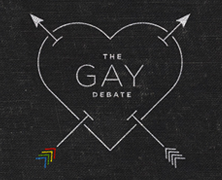Related to the question of the origins of same-sex attractions is the question of whether such attractions can change over time, or be changed as a result of therapeutic intervention. The “gay identity” paradigm assumes that people are born gay, and that a gay person cannot become straight any more than a black person can become white.
This assumption, however, flies in the face of a large body of both empirical and anecdotal evidence. There are many psychiatrists, psychologists, counselors, and therapists who have reported success in treating clients for unwanted same-sex attraction. Much of this research and clinical experience has been reported in the peer-reviewed scholarly literature for decades.[i] In addition, there are many people who have given personal testimony to changes in any or all the measures of their sexual orientation.[ii]
Sexual orientation change efforts (SOCE) or “re-orientation therapy” are often attacked on a number of grounds. Some argue that they are based on the flawed belief that homosexuality is a mental illness, a belief they claim was discredited by the American Psychiatric Association’s 1973 decision to remove homosexuality from its official list of mental disorders.[iii] Strictly speaking, however, such therapies are based only on the undeniable reality that some people experience same-sex attraction as something unwanted. Social conservatives assert that such people should have a right to seek therapy to help them change, in accordance with the basic ethical principle in determining the goal of therapy.[iv]
Others claim that such therapies are ineffective. Yet, as noted above, over nearly a century there have been many reports, based on personal testimonies, clinical experience, and peer-reviewed research, showing that some people can and do change from “gay” to “straight” on one, two, or even all three of the measures of sexual orientation.[v] Social conservatives do not claim that such change is easy or automatic, or that there is any particular method that is successful 100% of the time. Changing one’s sexual orientation is undoubtedly difficult, and not all who attempt it succeed. The same limitations are true in addressing other psychological issues. The question of how difficult or likely sexual orientation change may be is a subject for legitimate debate – but it is not plausible to make the argument (which is central to the “gay identity” paradigm) that change is impossible.
Finally, some claim that such therapies are actually harmful. However, this is a claim that must be supported by empirical evidence. The evidence in favor of the claim is almost entirely anecdotal, whereas there is research evidence that flatly contradicts such a charge.[vi] The hypothetical possibility of harm for some individuals is a subject for legitimate debate – but is has certainly not been proven beyond a reasonable doubt, to an extent which would justify interfering with the professional freedom of therapists and the autonomy of clients to seek the outcomes they desire. The following video further discusses the view that attempting to change your orientation is harmful.
[i] A comprehensive summary of this research can be found in: James E. Phelan, Neil Whitehead, Philip M. Sutton, “What Research Shows: NARTH’s response to the APA Claims on Homosexuality,” Journal of Human Sexuality Vol. 1 (2009), 9-39.
[ii] For example, see Bob Davies with Lela Gilbert, Portraits of Freedom: 14 People Who Came Out of Homosexuality (Downers Grove, Ill.: InterVarsity Press, 2001). Dr. Robert Spitzer, a psychiatrist who was instrumental in the 1973 decision by the American Psychiatric Association to remove homosexuality from its lists of official mental disorders, has confirmed the validity of such testimonies. See: Robert L. Spitzer, M.D., “Can Some Gay Men and Lesbians Change Their Sexual Orientation? 200 Participants Reporting a Change from Homosexual to Heterosexual Orientation,” Archives of Sexual Behavior 32, no. 5 (October 2003): 413.
[iii] For a detailed and objective history of this decision – including its highly politicized nature – see Ronald Bayer, Homosexuality and American Psychiatry: The Politics of Diagnosis (Princeton, N.J.: Princeton University Press, 1981).
[iv] The “Ethics Director” of the American Psychological Association has written, “Respecting a client’s right to self-determination both manifests a core value of our profession and plays a helpful and important role in providing services that will benefit clients.” Stephen Behnke, “Informed consent and APA’s new Ethics Code: enhancing client autonomy, improving client care,” Monitor on Psychology, Vol 35, No. 6 (June 2004), 80; online at: http://www.apa.org/monitor/jun04/ethics.aspx.
[v] See Phelan, et al. (op. cit.).
[vi] In one survey of over 800 clients of change therapies, only 7.1% said they were worse in as many as three of the seventy categories of potential negative consequences. Joseph Nicolosi, A. Dean Byrd, Richard W. Potts, “Retrospective self-reports of changes in homosexual orientation: A consumer survey of conversion therapy clients,” Psychological Reports 86, pp. 1071-88; cited in Phelan, et al., p. 42.
Authors of the most rigorous study ever conducted on persons seeking reorientation looked for evidence of harm using standardized measures of “psychological distress,” “spiritual well-being,” and “faith maturity.” They concluded, “We found no empirical evidence in this study to support the claim that the attempt to change sexual orientation is harmful.” Stanton L. Jones and Mark A Yarhouse, Ex-gays? A Longitudinal Study of Religiously Mediated Change in Sexual Orientation (Downers Grove, Ill.: IVP Academic, 2007), 359. Robert Spitzer (op. cit.), the pro-“gay” psychiatrist who found that change therapies can be effective, also declared, “For the participants in our study, there was no evidence of harm.”









